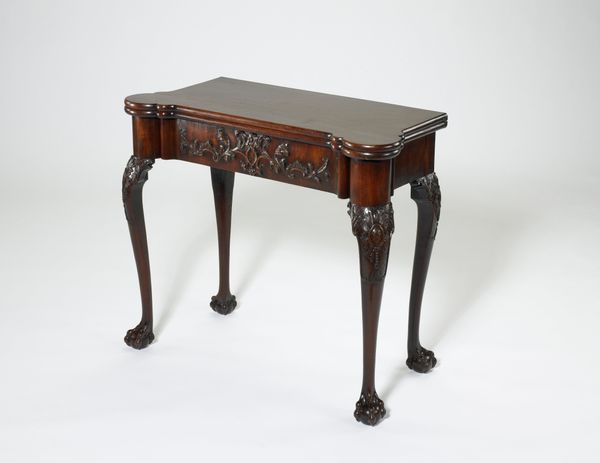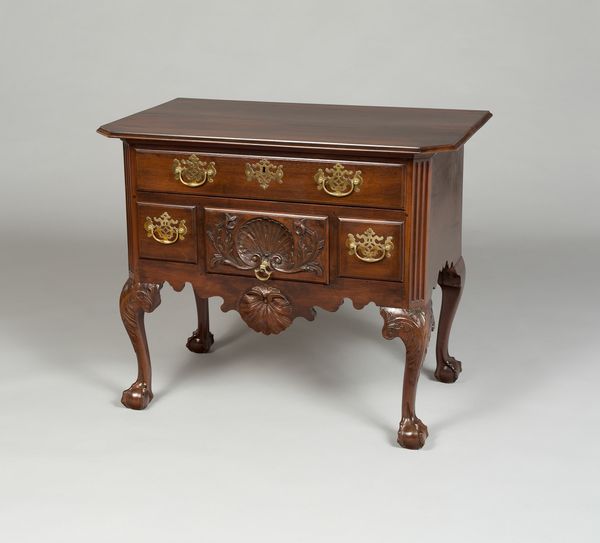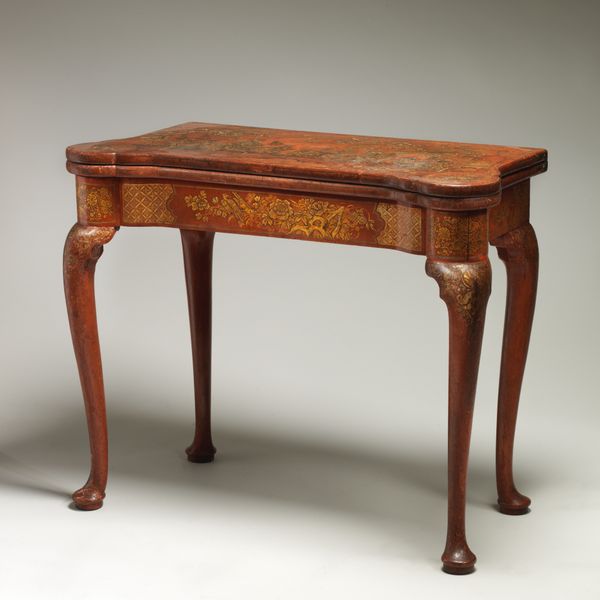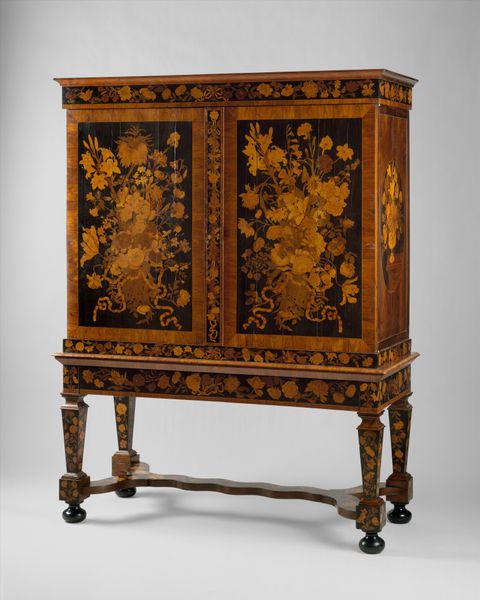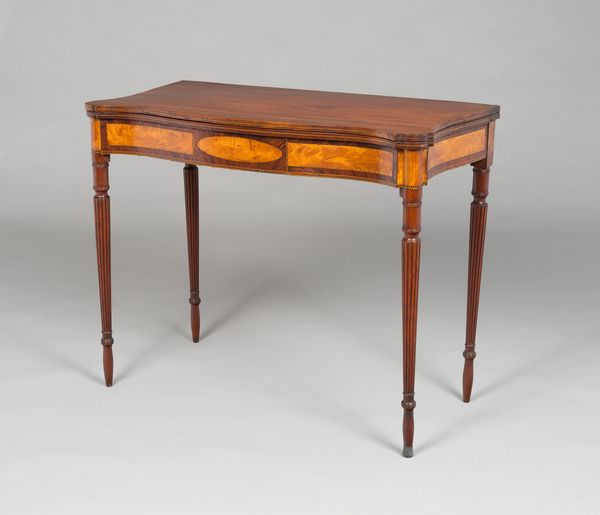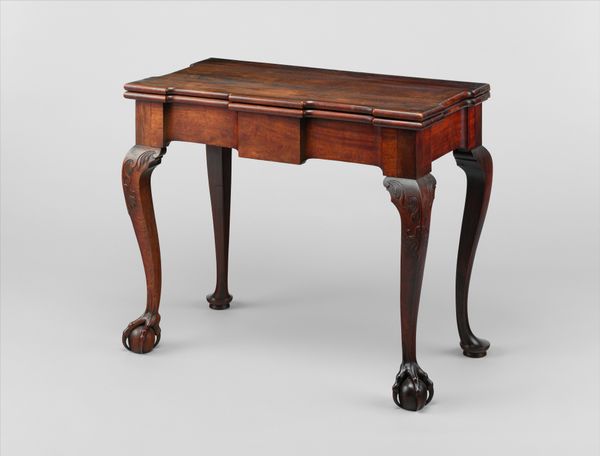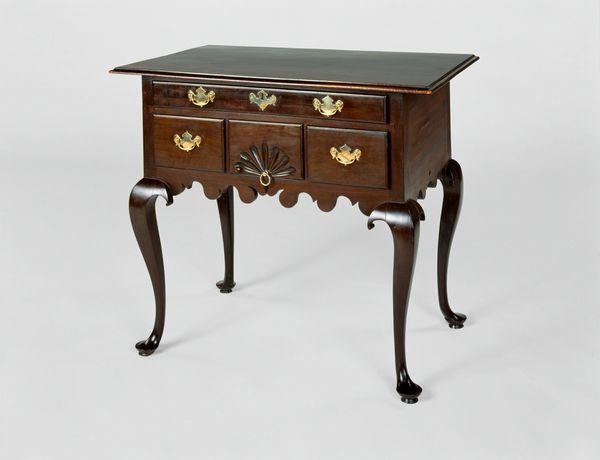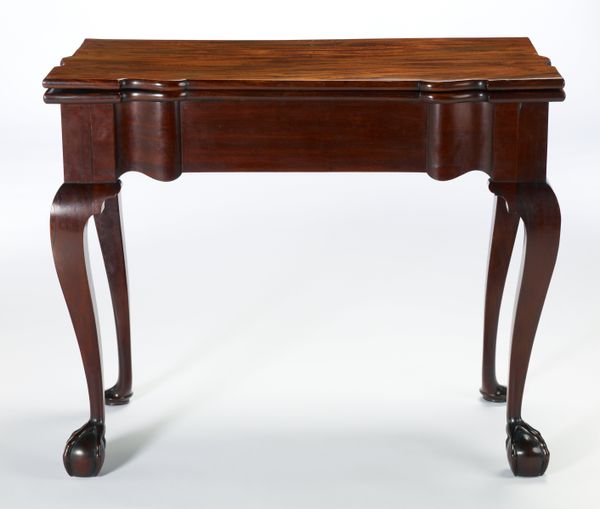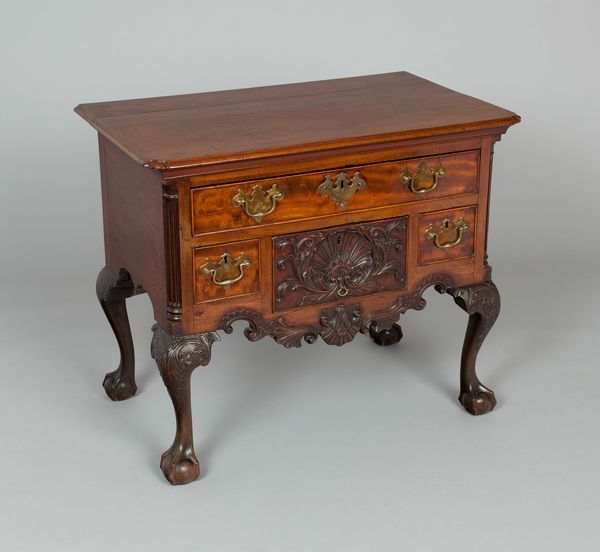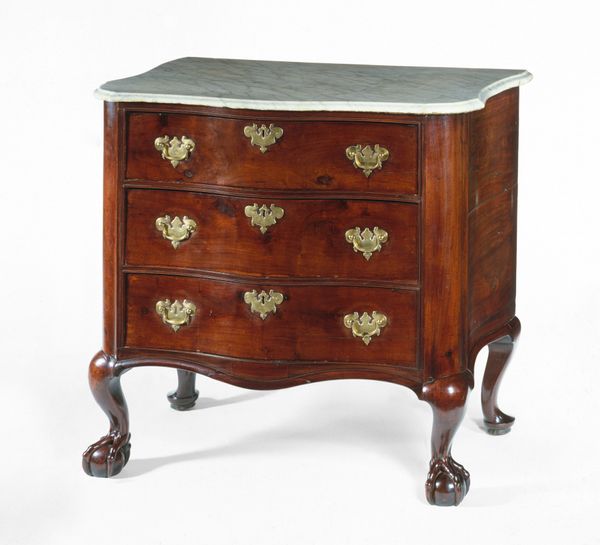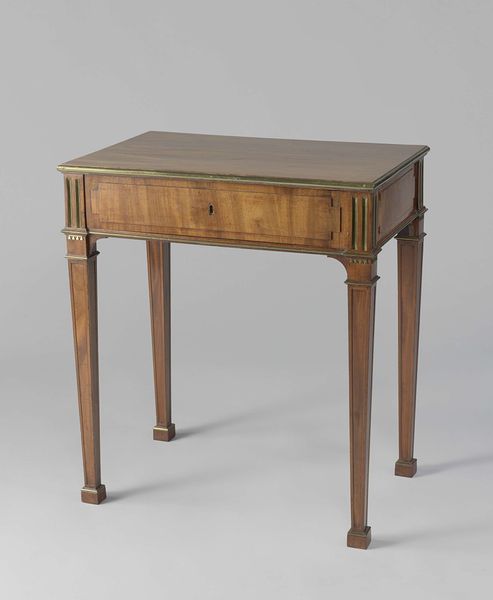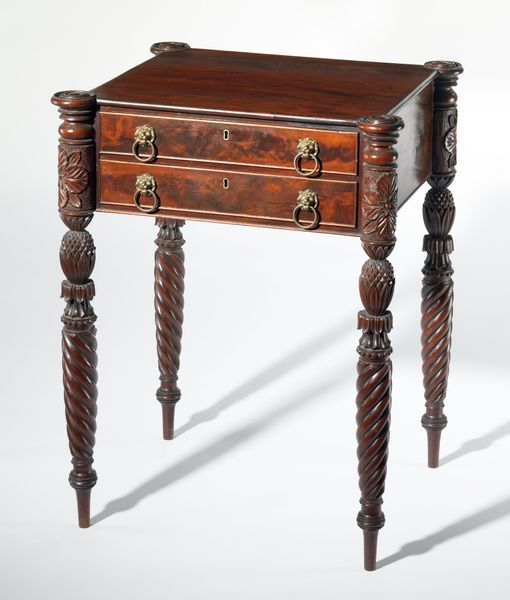
gold, wood
#
wood texture
#
pottery
#
asian-art
#
gold
#
furniture
#
stoneware
#
wood
#
earthenware
#
decorative-art
Dimensions: 36 5/8 x 36 5/8 x 17 5/8 in. (93.03 x 93.03 x 44.77 cm)
Copyright: Public Domain
Editor: We're looking at a pier table from around 1820, artist unknown, currently at the Minneapolis Institute of Art. It's wood, primarily, with gold detailing. The surface is covered in what appear to be Asian-inspired scenes. I’m really struck by the contrast between the black and the gold, it's quite opulent. What's your take on this piece? Curator: The opulence you note is key, but we need to ask, for whom? The Chinoiserie style, particularly popular during this period, was often an exoticization, a Western fantasy of the East. How does the table's display of these appropriated motifs speak to the dynamics of power and trade during the 19th century? Consider the Opium Wars happening not long after this piece was created. Editor: So, it's less about genuine appreciation and more about... collecting, in a way? Like displaying wealth and influence through appropriated designs? Curator: Exactly. It's not just decoration. Think about the labor involved. Whose hands crafted this table? Who profited from its sale? Understanding the global networks and colonial structures behind seemingly simple decorative arts is essential. What narratives are silenced by this kind of aesthetic borrowing? Editor: That's a good point; I hadn’t considered the silenced histories. Looking closer, these figures and landscapes feel almost like caricatures. Is it meant to be demeaning? Curator: Perhaps not intentionally demeaning, but definitely filtered through a Western lens, reinforcing stereotypes and power imbalances. The 'authenticity' isn’t the point, the power dynamic embedded in its creation and consumption is. And who gets to define good taste? Editor: It's definitely shifted my perspective. I’ll never look at "decorative art" quite the same way again. Curator: Good. Question everything, especially the things we consider beautiful. Only then can we begin to understand the complex web of history, power, and identity interwoven into every object.
Comments
minneapolisinstituteofart about 2 years ago
⋮
This pier table, a rare example of early 19th-century Massachusetts or New York painted furntiure, combines a simple neoclassical furniture form with elaborate Chinese-style gold and black surface decoration. During the 18th and early 19th centuries, American cabinetmakers imitated lacquer imported from China and Japan by combining European painting techniques with designs taken from Asian sources, called chinoiserie. Books on painted furniture detailed methods to achieve simulations of lacquered surfaces and also illustrated designs incorporating Asian figures and landscapes.
Join the conversation
Join millions of artists and users on Artera today and experience the ultimate creative platform.
